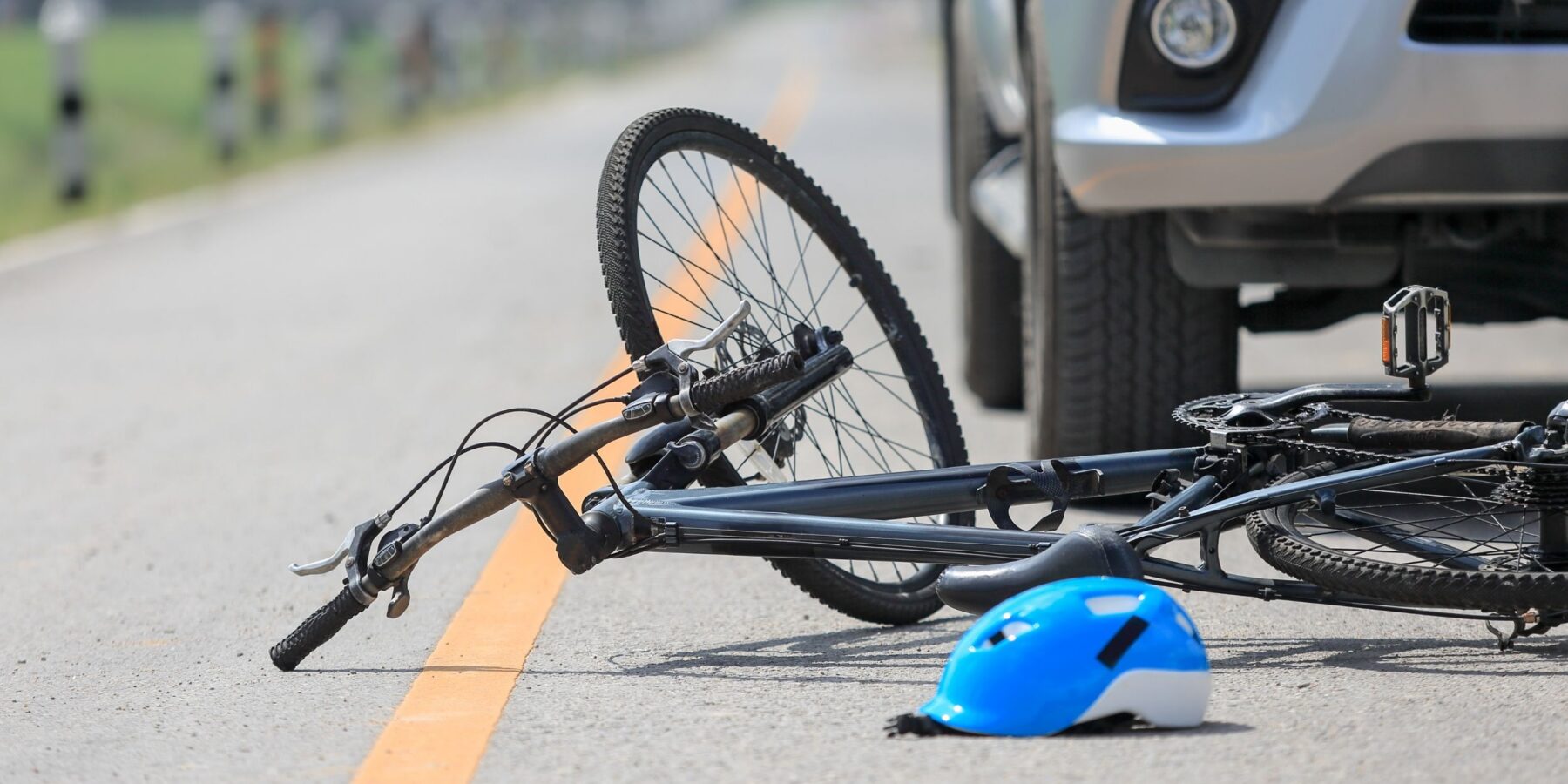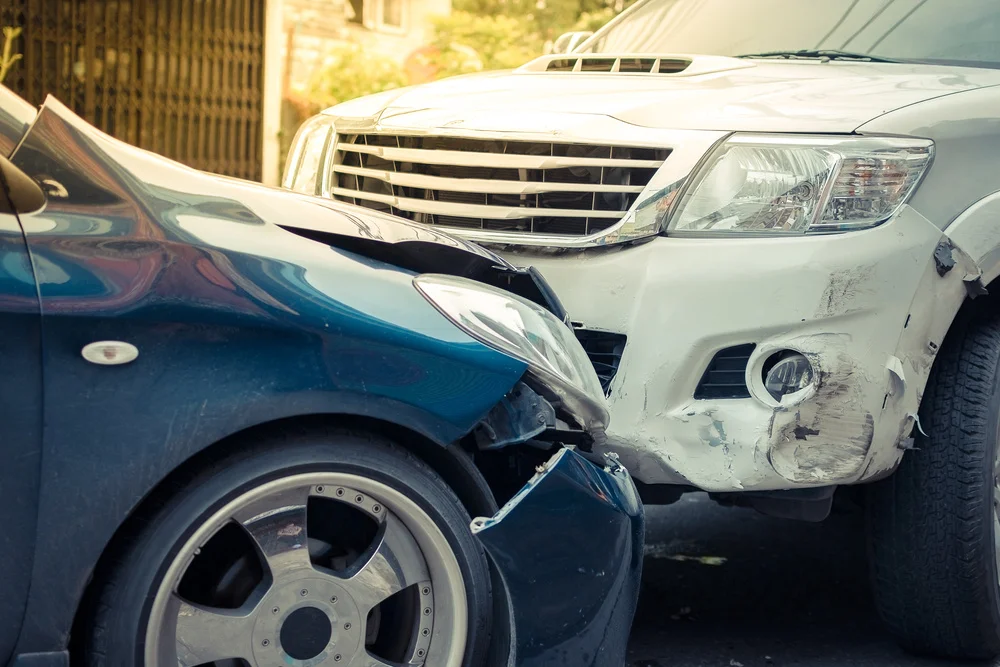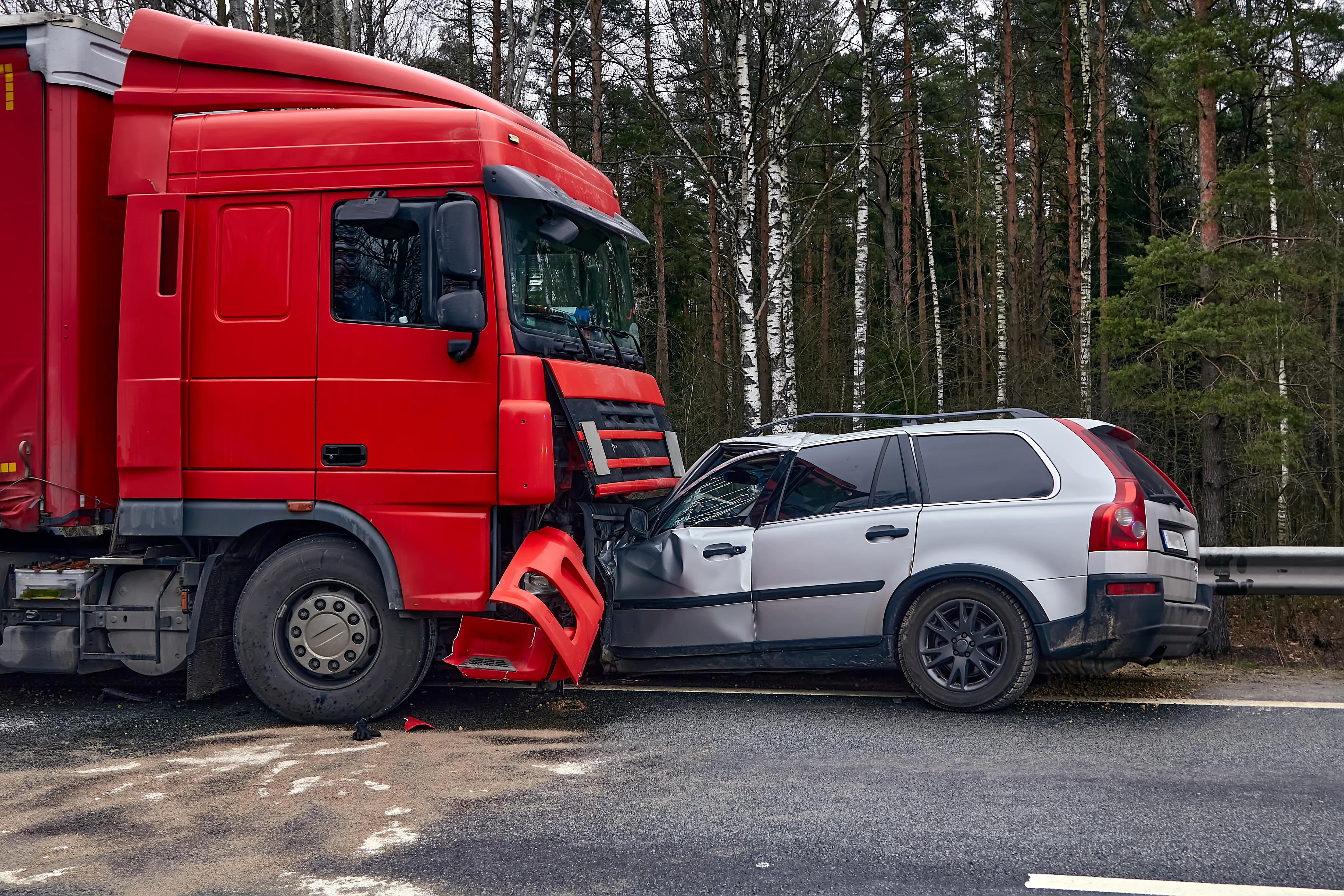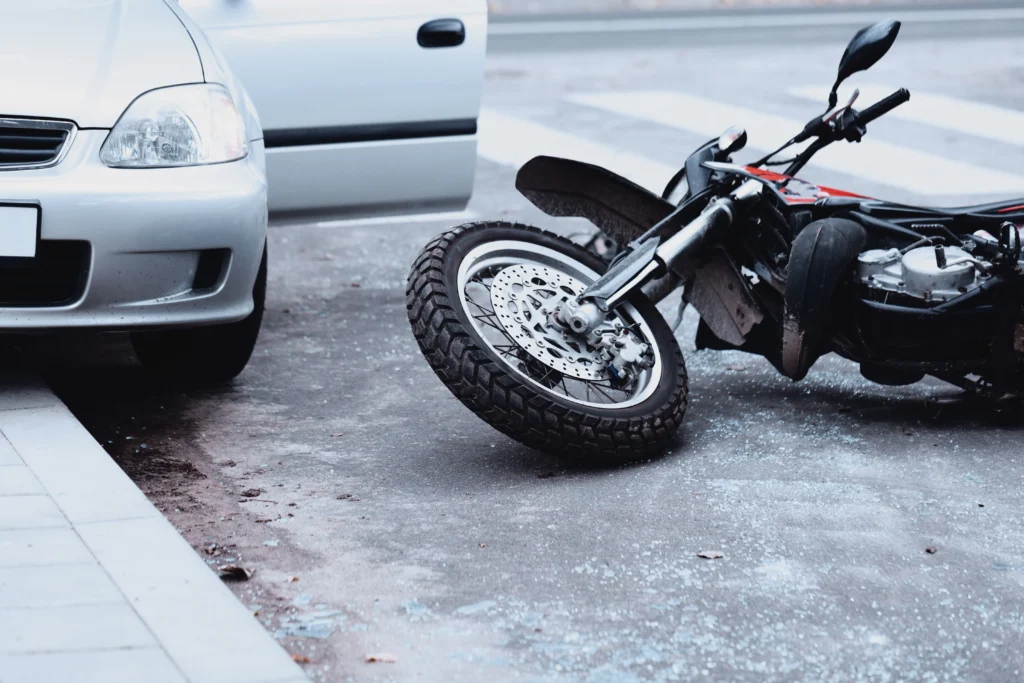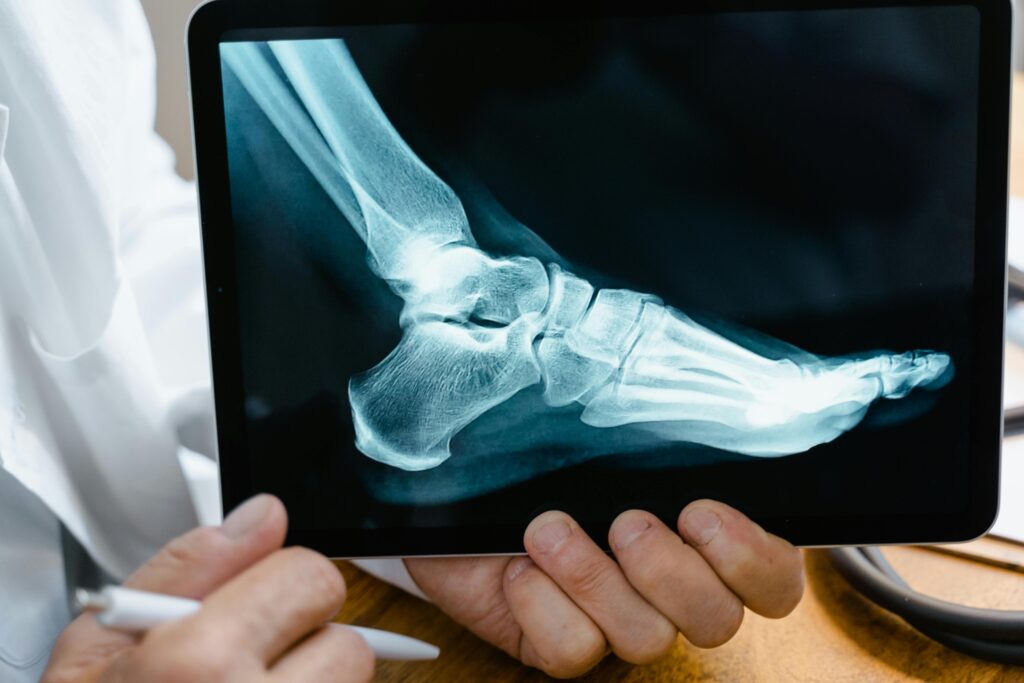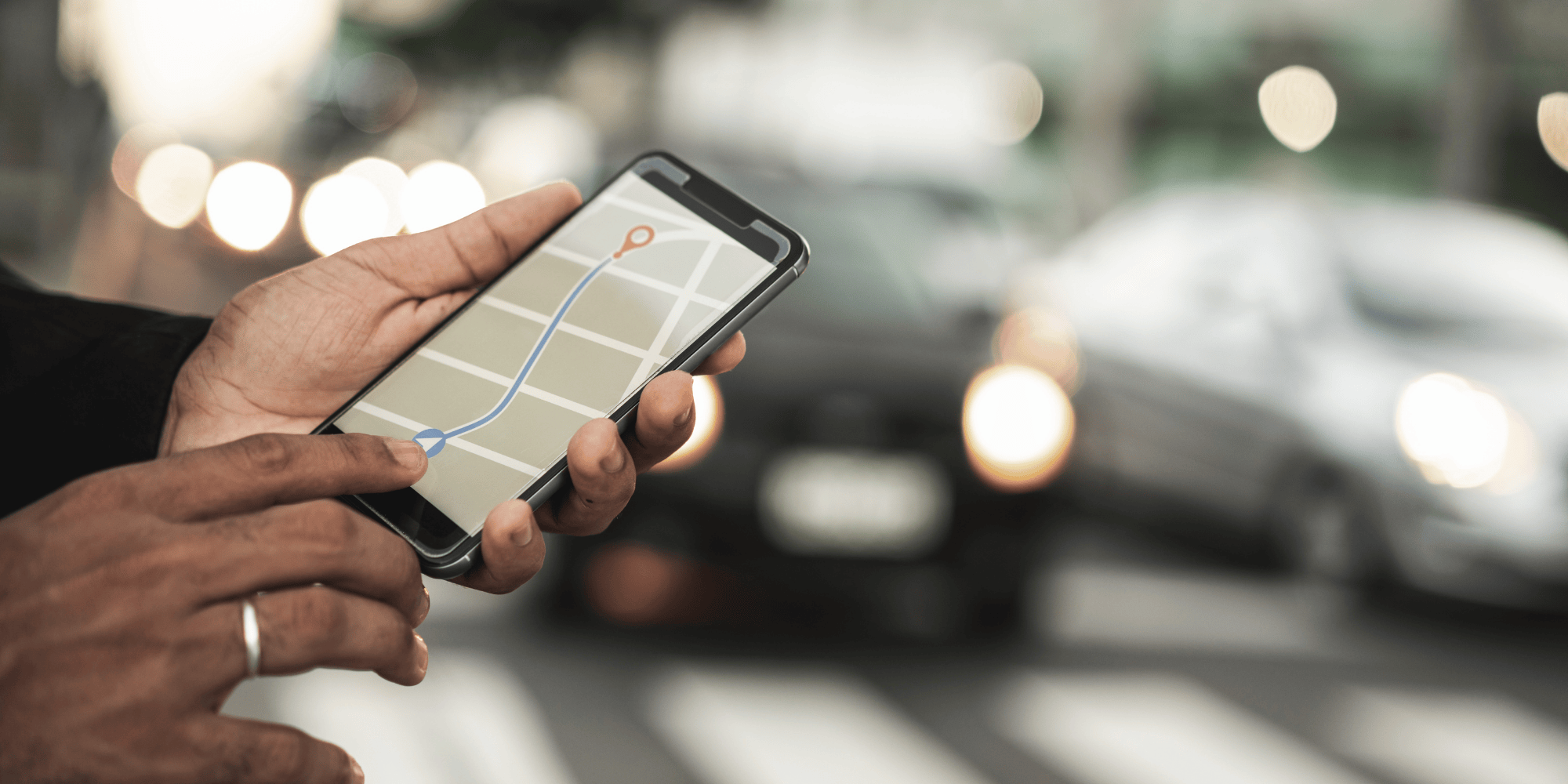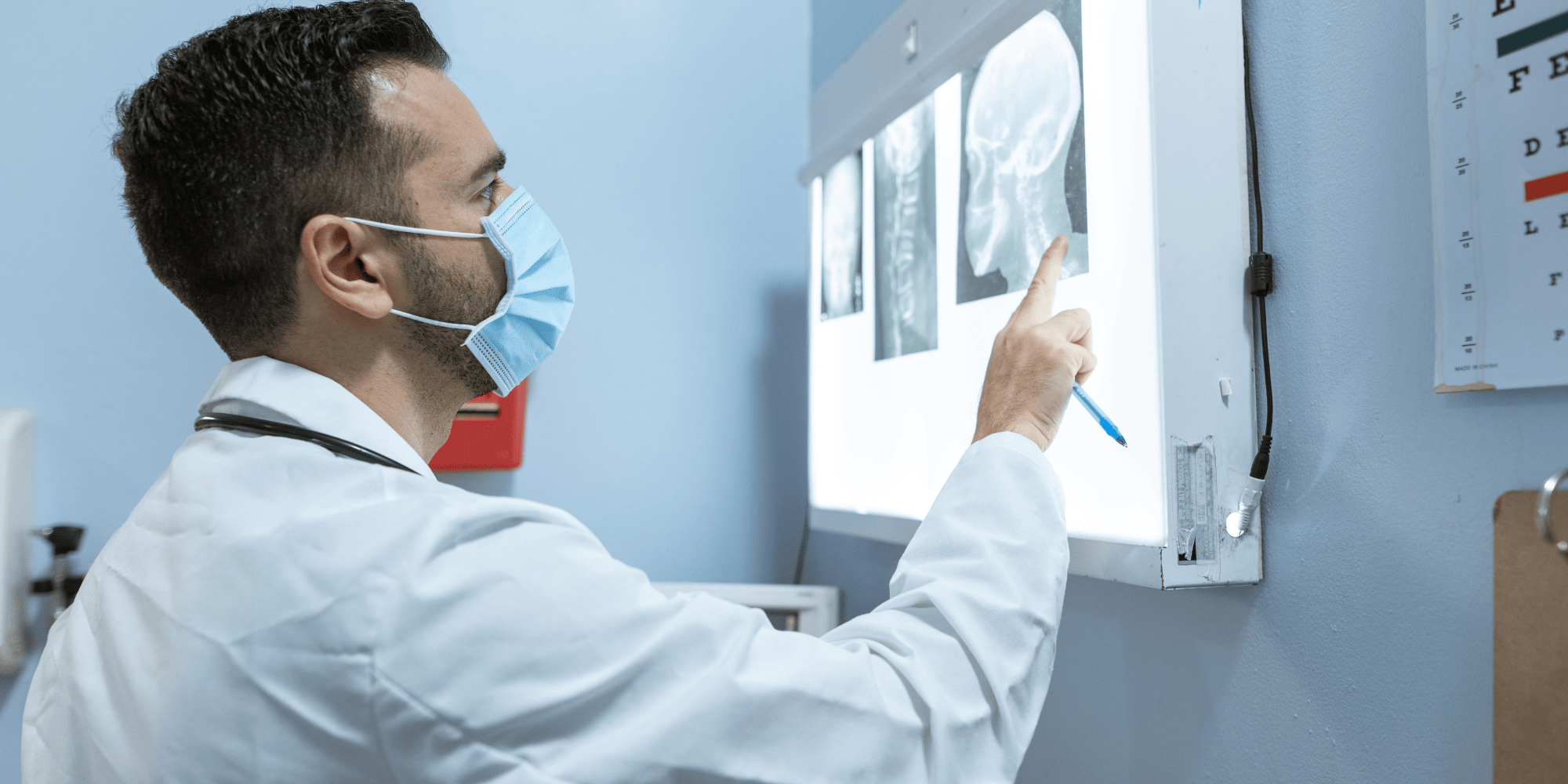What to Know About Bicycle Accidents in Colorado Springs
Bicycling in Colorado Springs offers breathtaking views, challenging trails, and a practical alternative to motor vehicles. But for many cyclists, a routine ride can turn tragic in an instant. Bicycle accidents in Colorado Springs often lead to devastating injuries, prolonged medical recovery, and complex legal challenges, especially when careless drivers, poor road conditions, or city infrastructure play a role.
If you or someone you love has been injured in a Colorado Springs bicycle accident, you have legal rights. At the Law Office of Jordan S. Levine, we help injured cyclists hold negligent parties accountable. We understand the local laws, road hazards, and insurance tactics that affect bicycle crash victims, and we’re here to fight for the full compensation you deserve.
Call our office today at (303) 835-4910 or visit our contact page to schedule a free consultation. There’s no cost to speak with a lawyer, and you won’t pay anything unless we win your case.
Why Bicycle Accidents Are So Dangerous in Colorado Springs
Colorado Springs presents a hazardous environment for cyclists due to its unique geography, road design, and traffic behavior. The combination of steep hills, high-speed traffic corridors, and unpredictable weather creates conditions that frequently lead to serious bicycle accidents. Below are some of the key risk factors cyclists face daily.
High-Traffic Roads and Urban Design Gaps
Colorado Springs has seen rapid growth, but its infrastructure has not kept pace with the increase in pedestrian and bicycle traffic. Major thoroughfares like Academy Boulevard and Powers Boulevard offer limited space for non-motorized travel, increasing the likelihood of vehicle-bicycle collisions.
Lack of Protected Bike Lanes
Many of the city’s busiest streets either lack bike lanes altogether or offer only minimal shoulder room. Cyclists are often forced to ride in the same lane as fast-moving traffic, which drastically reduces their safety. Drivers unfamiliar with cyclist etiquette may not leave adequate space when passing.
Motorist Inattention in Congested Zones
Drivers navigating congested roads often focus on other vehicles rather than looking for cyclists. Intersections with high vehicle volume, such as Austin Bluffs Parkway and Union Boulevard, are especially dangerous during peak hours.
Weather-Related Hazards in Mountainous Terrain
The city’s location at the base of the Rockies makes its weather patterns highly unpredictable. Clear skies can turn into hail, sleet, or high winds with little warning, all of which pose a significant threat to cyclists.
Sudden Ice and Rain
Moisture on pavement reduces tire traction and increases stopping distance. Black ice in shaded areas, especially near Palmer Park or on Gold Camp Road, can send even seasoned cyclists into a slide.
Strong Wind Gusts and Crosswinds
Open corridors like Garden of the Gods Road are known for powerful crosswinds. These gusts can destabilize a cyclist’s balance or blow them into adjacent lanes, particularly when navigating downhill slopes.
Steep Descents and Dangerous Curves
Bicyclists must contend with roads that dip and twist unpredictably. Areas like Cheyenne Canyon, Highway 24, and North Cheyenne Cañon are popular among cyclists and also infamous for their descent-related injury statistics.
Brake Failures and Overheating
On long downhill stretches, brakes can overheat and fail, especially on poorly maintained or overloaded bikes. This makes sudden stops nearly impossible.
Blind Corners and Lane Drift
Sharp curves limit visibility and give drivers little time to react to oncoming cyclists. A car that drifts even slightly out of its lane can cause a catastrophic collision.
Driver Behavior Creates Daily Risks
Colorado Springs drivers frequently exhibit dangerous behaviors that put cyclists in jeopardy, whether through distraction, aggression, or sheer negligence.
Texting While Driving
Despite state laws prohibiting texting while driving, enforcement is lax, and distracted driving remains one of the leading causes of cyclist injuries. Many accidents occur because a driver never sees the cyclist until the moment of impact.
The NHTSA’s distracted driving reports show this is a growing national trend that affects vulnerable road users the most.
Speeding and Aggressive Lane Changes
Speeding cars on Constitution Avenue or Fillmore Street regularly weave between lanes, leaving no room for cyclists. Aggressive drivers may attempt to overtake cyclists without signaling or may tailgate them in shared lanes, all behaviors that increase crash risk.
Common Causes of Bicycle Accidents in Colorado Springs
Bicycle accidents in Colorado Springs are rarely “accidents” in the true sense of the word. They are often the result of preventable driver negligence, infrastructure design flaws, or traffic law violations. Below are the most common factors behind serious crashes involving cyclists, each of which may serve as the basis for a personal injury claim.
Drivers Failing to Yield the Right of Way
Many drivers fail to recognize cyclists as legitimate roadway users. This disregard often leads to dangerous and illegal maneuvers that put riders directly in harm’s way.
Left-Turn Collisions at Intersections
One of the most common scenarios occurs when a driver makes a left-hand turn at an intersection and crosses directly into the path of an oncoming cyclist. This is especially common at busy junctions like Academy Boulevard and Dublin Boulevard.
According to the Insurance Institute for Highway Safety (IIHS), nearly one-third of fatal bicycle crashes involve a motor vehicle making a turn into a cyclist’s path.
Right Hook Accidents
Right hook collisions occur when a vehicle turns right at an intersection and cuts off a cyclist riding in the same direction. These often happen at poorly marked bike lanes or when a driver forgets to check their blind spot. The League of American Bicyclists provides detailed guidance on preventing these deadly collisions.
Distracted Driving and Inattention
Distracted drivers pose a serious threat to everyone on the road, but cyclists are particularly vulnerable due to their size and lack of protection.
Texting, Scrolling, or Using Apps
Even a brief glance at a phone can cause a driver to drift into a bike lane or run a red light. The Centers for Disease Control and Prevention (CDC) estimates that more than 3,000 people die annually from distracted driving, many of them pedestrians and cyclists.
In-Car Distractions
GPS systems, infotainment screens, and even passengers can divert a driver’s attention. These distractions make it harder to spot cyclists, especially at night or in low-visibility areas like downtown corridors or trail crossings along Cascade Avenue.
Speeding and Reckless Driving
Excessive speed increases both the likelihood of a crash and the severity of injuries sustained. Cyclists hit by speeding vehicles often suffer catastrophic trauma.
Exceeding Posted Limits on Major Arteries
Roads like I-25 frontage roads, North Nevada Avenue, and Constitution Avenue frequently see vehicles traveling 10 to 20 mph above posted limits. At high speeds, even safety gear like helmets cannot prevent severe injury or death in a crash.
The National Transportation Safety Board (NTSB) emphasizes that speeding is a leading factor in over 25% of traffic fatalities, with cyclists among the most affected.
Aggressive Lane Changes and Tailgating
Drivers who weave between lanes or follow too closely leave cyclists with no room to maneuver. These behaviors are not just dangerous; they are violations of Colorado’s traffic laws and can form the basis of a negligence claim.
Dooring Accidents in Urban Zones
When drivers or passengers open their doors into the path of an approaching cyclist, the result is often a violent impact and a hard fall onto pavement or into traffic.
Downtown Areas with Parallel Parking
Tejon Street, Kiowa Street, and parts of Nevada Avenue are hotspots for dooring crashes due to dense parking layouts and high foot traffic. Cyclists forced to ride close to parked vehicles have little time to react to an unexpectedly opened door.
The Colorado Department of Transportation recommends driver-side mirror checks before exiting, a simple practice known as the “Dutch Reach” that can prevent many of these injuries.
Poor Road Design and Lack of Infrastructure
Not all causes of bicycle accidents are related to driver behavior. Poorly designed roads, missing bike lanes, and inadequate signage also contribute to collisions.
Inconsistent or Missing Bike Lanes
While Colorado Springs has made some progress in expanding its bike lane network, many key connectors lack any protected cycling infrastructure. This forces riders into active traffic lanes, especially along stretches of Fillmore Street, Union Boulevard, and Airport Road.
The PeopleForBikes City Ratings show Colorado Springs still ranks below other mid-size U.S. cities for bicycle-friendly infrastructure and safety.
Unmarked Crosswalks and Trail Crossings
Intersections where recreational trails meet roadways, such as the Pikes Peak Greenway crossing at Uintah Street, often lack proper signage or flashing signals. This creates confusion for both drivers and cyclists, increasing the likelihood of serious collisions.
Injuries Commonly Sustained in Colorado Springs Bicycle Accidents
Bicycle accidents frequently result in severe, life-altering injuries due to the lack of physical protection for riders. Unlike occupants of cars and trucks, cyclists absorb the full force of an impact, whether it’s with a moving vehicle, pavement, or roadside object. In Colorado Springs, where high-speed corridors and elevation-based terrain magnify these risks, injuries can be especially devastating.
Traumatic Brain Injuries and Head Trauma
Even with a helmet, cyclists face a significant risk of traumatic brain injury (TBI) when involved in a crash. These injuries can lead to lifelong cognitive, physical, and emotional impairments.
Concussions and Mild TBIs
Mild TBIs, often labeled as concussions, occur when a cyclist’s head strikes a hard surface or rapidly accelerates/decelerates on impact. Symptoms may include confusion, dizziness, headaches, and memory loss. The Centers for Disease Control and Prevention (CDC) reports that motor vehicle-related incidents are one of the leading causes of concussion-related emergency room visits.
Severe Brain Injuries and Hemorrhaging
In more violent collisions, cyclists may suffer skull fractures, brain bleeds (such as subdural hematomas), or diffuse axonal injuries. These conditions require immediate emergency care and may result in permanent disability or death. The Mayo Clinic outlines the symptoms and treatment protocols for traumatic brain injuries and emphasizes early intervention.
Spinal Cord and Back Injuries
The impact from a bicycle crash often causes significant trauma to the neck, back, or spinal column. These injuries can limit mobility, affect nerve function, and require long-term rehabilitation.
Herniated Discs and Spinal Compression
When a cyclist is thrown from their bike or lands awkwardly, the spine may absorb the brunt of the impact. This can result in bulging or herniated discs that compress nerves and cause radiating pain. According to the National Institute of Neurological Disorders and Stroke (NINDS), these injuries often require a combination of physical therapy, steroid injections, and in some cases, surgery.
Paralysis and Permanent Nerve Damage
In high-impact accidents, the spinal cord itself may be damaged. This can lead to partial or full paralysis depending on the location and severity of the injury. Victims with spinal trauma often face life-altering consequences requiring assistive devices and home modifications.
Bone Fractures and Orthopedic Injuries
Bone fractures are among the most common injuries in bicycle crashes, especially when cyclists are struck by a vehicle or thrown into the air.
Broken Arms, Wrists, and Shoulders
Cyclists instinctively extend their arms to brace for a fall. This often results in fractured wrists, dislocated shoulders, or broken clavicles. These injuries may require immobilization, orthopedic surgery, and months of physical therapy.
Pelvic, Hip, and Leg Fractures
In accidents involving direct side impact or falls onto concrete, cyclists may suffer broken femurs, fractured hips, or crushed kneecaps. These types of injuries often require surgical repair and prolonged non-weight-bearing recovery. The American Academy of Orthopaedic Surgeons (AAOS) provides extensive information on recovery timelines and long-term rehabilitation.
Internal Injuries and Organ Damage
Some of the most dangerous injuries are invisible at first glance. Internal bleeding or organ trauma may not present immediate symptoms but can quickly become life-threatening.
Blunt Abdominal Trauma
Impacts to the midsection, often from handlebars, vehicle parts, or pavement, can cause serious internal injuries. Damage to the spleen, liver, or kidneys may require emergency surgery. The National Library of Medicine stresses the importance of early imaging and diagnosis for blunt abdominal injuries, particularly following vehicle-related trauma.
Rib Fractures and Lung Complications
Broken ribs are common in side-impact or door-impact crashes. In severe cases, rib shards can puncture the lungs, causing conditions like pneumothorax (collapsed lung). Victims often require hospitalization, drainage tubes, and follow-up respiratory care.
Facial Injuries and Dental Trauma
When a cyclist is thrown from their bike, the face often takes the brunt of the fall, especially if the rider is not wearing a full-face helmet.
Broken Noses, Jaw Fractures, and Eye Trauma
Facial bones are delicate and easily broken in a collision. Injuries may require reconstructive surgery, maxillofacial procedures, or result in permanent disfigurement. The American Association of Oral and Maxillofacial Surgeons (AAOMS) offers resources for understanding the extent of facial trauma after an accident.
Knocked-Out Teeth and Dental Fractures
Cyclists often experience dental injuries ranging from chipped teeth to complete avulsion (tooth ejection). These require urgent dental care and may involve root canals, implants, or cosmetic restoration.
Road Rash and Soft Tissue Injuries
Sliding across pavement after a crash can result in severe abrasions and soft tissue damage. While sometimes considered “minor,” these injuries can be extremely painful and prone to infection.
Friction Burns and Skin Loss
Known as road rash, these injuries can range from surface-level abrasions to deep wounds that expose muscle or bone. Severe cases may require skin grafting and leave permanent scars. The American Burn Association classifies road rash as a form of friction burn and stresses the need for sterile wound care.
Muscle Tears and Ligament Damage
Twisting or impact injuries can cause sprains, torn ligaments, or muscle tears that impair movement. Common sites include the knees, ankles, and shoulders. Recovery typically involves rest, bracing, and targeted physical therapy.
Emotional and Psychological Trauma
Not all injuries from a bicycle accident are visible. Many victims suffer from emotional distress that affects their ability to return to cycling or even drive a car.
Post-Traumatic Stress Disorder (PTSD)
PTSD may develop in riders who experience flashbacks, nightmares, or anxiety related to the crash. These symptoms can interfere with daily life, relationships, and the ability to resume normal activities. The American Psychological Association (APA) emphasizes the importance of therapy and early intervention as critical components of recovery.
Depression and Anxiety
Chronic pain, mobility loss, or disfigurement often leads to depression. Emotional damages are a vital component of a personal injury claim and should be supported by counseling records and mental health evaluations.
What to Do After a Bicycle Accident in Colorado Springs
The minutes and days following a bicycle accident can be overwhelming, especially when you’re injured, disoriented, or dealing with property damage. Knowing what steps to take can protect your health, preserve crucial evidence, and strengthen your legal case. Whether you were hit on a city street, near a trailhead, or in a busy intersection, the actions below can make a critical difference in the outcome of your claim.
Prioritize Medical Attention Immediately
Your health comes first. Even if you feel “fine,” many serious injuries, like concussions, internal bleeding, or spinal trauma, may not show symptoms right away.
Call 911 and Accept Emergency Care
If you or anyone else is injured, call 911 immediately. Allow first responders to examine you and transport you to the hospital if needed. The Colorado Department of Public Health & Environment urges accident victims to accept evaluation even for seemingly minor trauma.
Follow Up with a Physician or Specialist
After initial treatment, visit your primary care doctor or a specialist to monitor delayed symptoms. Document every appointment, diagnosis, and medication prescribed. These records form the foundation of your injury claim.
Report the Crash to Law Enforcement
Colorado law requires a police report for any accident involving injury, death, or significant property damage.
File an Official Report with CSPD
If the police didn’t respond to the scene, file a report with the Colorado Springs Police Department as soon as possible. You can request a copy through the CSPD Records Request Portal.
This report is critical in documenting fault, witness statements, and the context of the crash, all key elements in a successful injury case.
Collect Evidence at the Scene If You’re Able
If your injuries allow, take photos and gather information before leaving the accident site. If not, ask a bystander or family member to help.
Take Photos of Vehicles, Road Conditions, and Injuries
Use your phone to document the scene thoroughly before leaving. Start with close-up photos of your damaged bicycle, as well as any vehicles involved, including license plates and impact points. Photograph the road conditions, traffic signals, skid marks, and nearby signage to help establish the cause of the crash. If you have visible injuries like bruises or cuts, take clear pictures before receiving treatment. Finally, capture wide-angle shots of the entire area to show your position about the road, intersections, and surrounding traffic. These images can serve as vital evidence when proving fault and damages in your claim.
Get Contact Information from Witnesses
Names, phone numbers, and written accounts from witnesses can help corroborate your version of events. Independent witnesses can also dispute false claims made by the at-fault driver or their insurance company.
Avoid Speaking to Insurance Adjusters Right Away
Insurance companies are not on your side. Their goal is to minimize payouts, often by asking misleading questions or offering lowball settlements early in the process.
Refer All Insurance Communications to Your Lawyer
Do not provide a recorded statement or sign anything before consulting an attorney. The Colorado Division of Insurance confirms that you have no legal obligation to speak to the opposing party’s insurance adjuster without representation.
Your lawyer can handle these conversations and ensure that your words are not used against you later.
Keep a Personal Injury Journal
Tracking your recovery can provide powerful evidence of pain, limitations, and emotional distress. A personal injury journal helps establish the real-life impact of your injuries beyond what’s shown on X-rays or medical charts. By recording your symptoms day by day, you create a detailed timeline that shows how the accident disrupted your ability to work, perform daily tasks, or participate in activities you once enjoyed. It also captures moments that medical records often miss, like sleepless nights, anxiety about returning to traffic, or the emotional toll of losing your independence. This firsthand account can be used to support claims for non-economic damages such as pain and suffering, emotional trauma, and loss of enjoyment of life. When presented properly, it adds credibility and depth to your case, giving juries and insurance adjusters a clear picture of what you’ve endured.
Log Daily Symptoms and Life Disruptions
Document how your injuries affect your ability to work, drive, sleep, or enjoy activities. Also include emotional symptoms such as anxiety, depression, or fear of cycling. This journal becomes a vital record for calculating non-economic damages like pain and suffering.
Save All Receipts, Records, and Bills
Accurate financial documentation is essential for proving the full extent of your losses after a bicycle accident in Colorado Springs. Insurance companies and defense attorneys will scrutinize every detail of your claim, looking for ways to downplay your injuries or dispute your need for compensation. By organizing and retaining all relevant financial records, you create a strong, verifiable foundation that supports your demand for damages. This includes medical bills, repair invoices, proof of lost wages, prescription receipts, and mileage logs for trips to doctors or specialists. These documents paint a clear picture of the economic impact the crash has had on your life, from immediate out-of-pocket costs to long-term expenses like follow-up care or rehabilitation. The more precise and comprehensive your financial evidence is, the more leverage your attorney has during settlement negotiations or at trial. Without it, insurance companies are far more likely to undervalue or reject your claim entirely.
Track Medical Bills, Property Damage, and Lost Wages
Keep a detailed record of:
- Hospital and specialist charges
- Prescription costs
- Bicycle repair or replacement
- Missed work and lost income
- Mileage to and from appointments
These costs will be used to calculate your total compensatory damages, and they help your attorney present a complete picture of your financial losses.
Contact a Colorado Springs Bicycle Accident Lawyer
Time is critical after a serious bicycle crash. Evidence fades, witness memories deteriorate, and legal deadlines begin to count down immediately.
Hire Legal Help Without Delay
An experienced bicycle accident lawyer can launch an investigation, gather witness testimony, preserve camera footage, and negotiate with insurers on your behalf. The Colorado Revised Statutes impose strict deadlines (called statutes of limitations), so it’s important to act quickly.
You don’t have to fight this alone, legal support can make all the difference in your physical, financial, and emotional recovery.
Get Legal Help After a Colorado Springs Bicycle Accident
A bicycle accident can change your life in an instant. Whether you’re facing hospital bills, long-term rehabilitation, chronic pain, or emotional trauma, you shouldn’t have to navigate the aftermath alone. The Law Office of Jordan S. Levine is here to help you understand your legal rights, hold the negligent party accountable, and fight for the full compensation you deserve. We handle everything from investigating the crash and gathering evidence to negotiating with insurance companies and, if needed, taking your case to trial.
Our firm works on a contingency fee basis, which means you pay nothing unless we win your case. You’ve already been through enough. Let us take the burden off your shoulders so you can focus on healing and rebuilding your life.
Call us today at (303) 835-4910 or reach out through our contact page to schedule your free consultation. If you’ve been injured in a Colorado Springs bicycle accident, now is the time to act. We’re ready to fight for you.
Practice Areas
Trust Levine LawWith Your Personal Injury Claim
If you or a loved one have been injured, Levine Law will fight for you every step of the way. We will give our all to secure the compensation you rightfully deserve.
Contact usfor a free consultation.
Phone: (303) 951-4810
